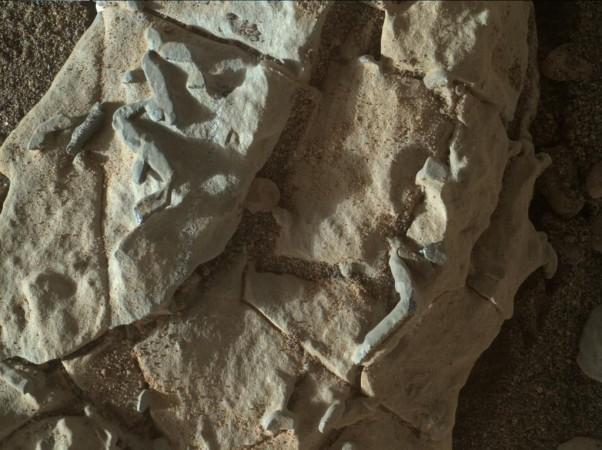
NASA's Mars Curiosity Rover has made a new discovery on the Red Planet while exploring it. The rover examined and photographed a set of stunning "stick-like formations" on the Martian surface.
ALSO READ: Guys beware! Sex robots will make men obsolete in the future
The images of these stick-like formations were taken by the Mars Curiosity rover on Tuesday, January 2, 2018.
The tweet stated: "Meanwhile, back on Mars... I'm checking out these stick-like figures. Each is about a quarter-inch long. Maybe they're crystals? Or they could be minerals that filled spaces where crystals dissolved away. Stay tuned! Science continues. [sic]"
ALSO READ: Here are 3 ways you can make her orgasm multiple times, study reveals
The rover team posted a tweet along with an image of the formations on the planet's surface on Thursday, January 4, 2018.
Meanwhile, back on Mars... I’m checking out these stick-like figures. Each is about a quarter-inch long. Maybe they're crystals? Or they could be minerals that filled spaces where crystals dissolved away. Stay tuned! Science continues. pic.twitter.com/4oR70BVht3
— Curiosity Rover (@MarsCuriosity) January 4, 2018
ALSO READ: Aliens will contact us when we are ready, says radio astronomer
The tweeted image created quite a stir among some Twitter users, who variously claimed the formations were tire tracks, remains of space dinosaur fossils, sandworms, Viking runes, petrified dog poop, etc.
ALSO READ: Here's why this bizarre fashion trend will make it big in 2018
Another finding made by the rover on Mars was apparently a cannonball. According to NASA scientists, the size of the sphere was less than a quarter of an inch (5 millimetres) and it was said to be made up of calcium sulfate, sodium and magnesium.
Mars may be named for the god of war, but these weird things aren't cannonballs. They're pebbles.
— Curiosity Rover (@MarsCuriosity) December 5, 2017
The round 5mm concretion I found (L) contains calcium sulfate, sodium + magnesium, making it different from the hematite-rich "blueberries" (R) @MarsRovers Opportunity found. Cool! pic.twitter.com/BDWwrOv02l
ALSO READ: Heard about penis whitening, the weird new beauty trend?
Apart from these significant findings on the Red Planet, scientists have also succeeded in growing two worms in synthetic Martian soil, which have raised hopes of the possibility of farming on the planet.
The research took place in the Netherlands, where synthetic Martian soil was created by researchers using volcanic terrestrial rocks. It increased the hope of a human civilisation on Mars.

















